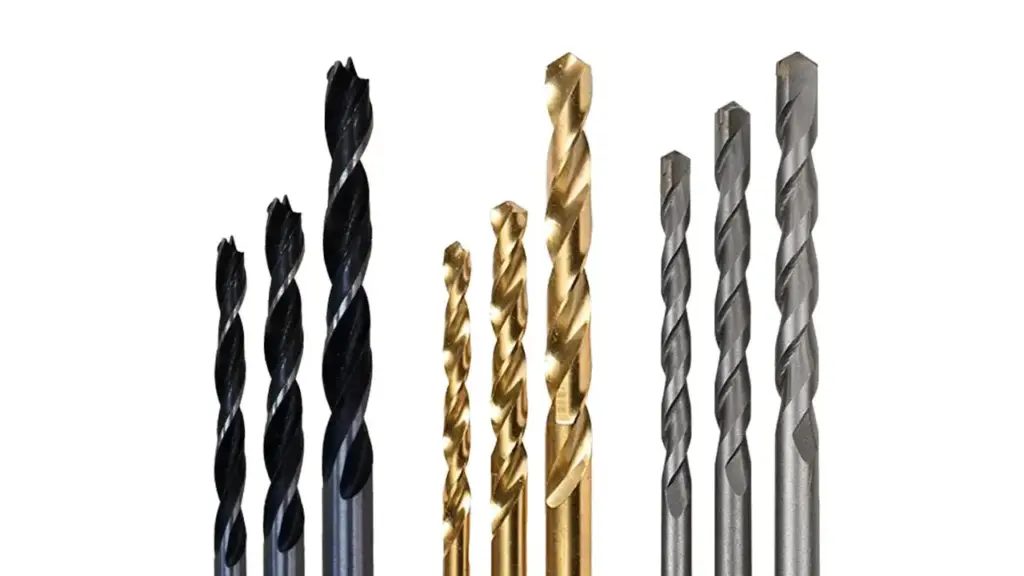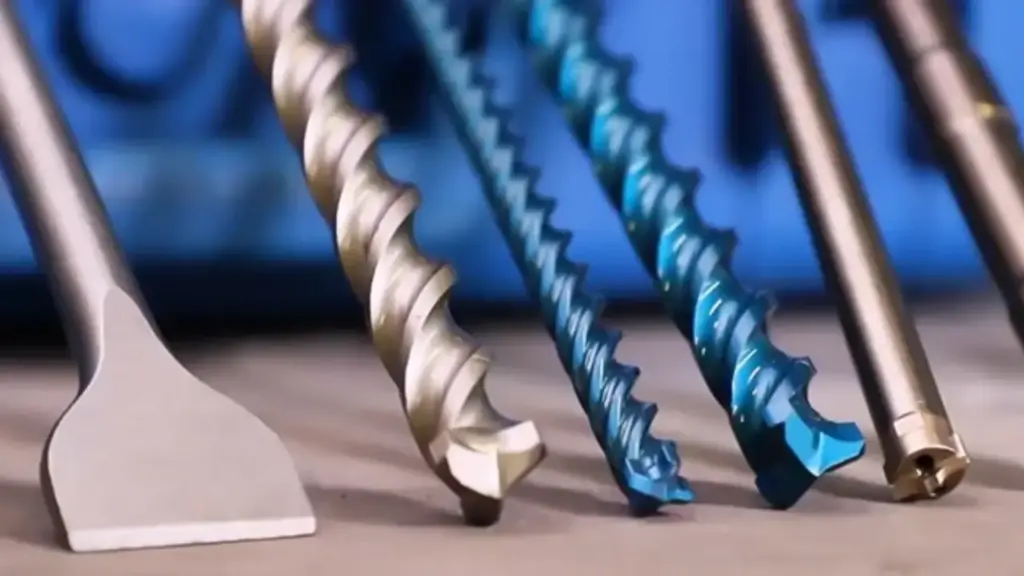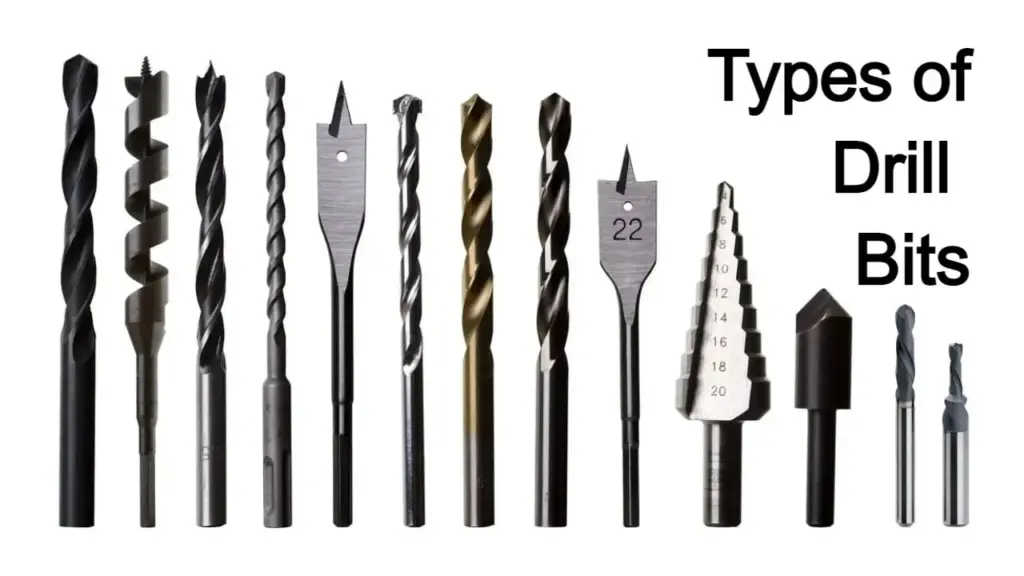A drill bit is a crucial cutting tool used with a drill to create holes in various materials. These bits come in a wide array of sizes, shapes, and materials, each designed for specific applications, from woodworking and metalworking to masonry and more. Understanding the different types of drill bits is essential for achieving clean and accurate holes.
This ultimate guide will delve into the fascinating world of drill bits, exploring their diverse types, the materials they are made from, and the specific tasks they are best suited for. Whether you’re a seasoned professional or a DIY enthusiast, this comprehensive overview will equip you with the knowledge to select the perfect drill bit for any project.
What is a Drill Bit

A drill bit is a cutting tool used in a drill to create cylindrical holes in various materials. These drill bit tools come in a wide array of sizes, shapes, and materials, each designed for specific applications, from drilling wood and plastic to metal, concrete, and even glass.
The design of a drill bit typically includes a cutting point, flutes to remove debris, and a shank that fits into the drill’s chuck, enabling the rotational force needed to bore through the workpiece.
What Does a Metal Drill Bit Look Like
A metal drill bit typically has a more pointed tip compared to a wood drill bit, with a point angle usually between 118 and 135 degrees. This sharper angle is designed to effectively cut through the denser material of metals.
Unlike wood drill bits, which often feature a brad point or screw tip for self-centering, metal drill bits generally have a more straightforward conical point.
Visually, metal drill bits often have a uniform metallic appearance, sometimes with a black oxide or titanium nitride coating, which can give them a dark gray or gold color respectively. These coatings enhance hardness and reduce friction.
The flutes, or grooves running along the body of the bit, are designed to remove metal chips efficiently as the bit drills. You might also see markings on the shank indicating the bit’s size and material type, such as “HSS” for high-speed steel or “Cobalt” for cobalt steel alloy.
What Are Drill Bits Made Of

Drill bits are manufactured from a variety of materials, each chosen for its specific properties like hardness, toughness, and heat resistance, which dictate the types of materials the bit can effectively drill. The most common materials include different grades of steel and carbide.
- Carbon Steel: These are less expensive and suitable for softer materials like wood and plastic but lose their edge quickly and aren’t ideal for metal.
- High-Speed Steel (HSS): A significant upgrade from carbon steel, HSS bits retain hardness at higher temperatures, making them suitable for drilling wood, plastic, and most metals.
- Cobalt Steel: An alloy of HSS with added cobalt, these bits offer even greater heat and wear resistance, making them excellent for drilling tough materials like stainless steel.
- Carbide: Extremely hard and heat-resistant, carbide-tipped or solid carbide bits are used for drilling very hard materials such as masonry, tile, and hardened metals.
In addition to the base material, drill bits often feature coatings to enhance their performance and longevity. Common coatings include black oxide for corrosion resistance and reduced friction, titanium nitride (TiN) for increased hardness and longer life, and titanium aluminum nitride (TiAlN) for even greater heat and wear resistance, particularly when drilling harder metals at high speeds.
What Do Drill Bits Do

Drill bits are indispensable tools that empower us to penetrate solid materials, creating openings with precision and efficiency. Their fundamental purpose extends beyond simply making holes; they facilitate a vast array of construction, manufacturing, and DIY activities. Understanding the diverse functions of drill bits reveals their crucial role in shaping and assembling the world around us.
Creating Holes
The primary function of a drill bit is to create cylindrical holes in various materials. By rotating and applying pressure, the cutting edges of the bit remove material, gradually forming a hole of the desired diameter and depth. The design of the bit, including its point, flutes, and material, is optimized for specific materials to ensure clean and accurate hole creation, whether it’s a pilot hole for a screw in wood or a large opening for a pipe in metal.
Fastening and Assembly
Drill bits play a vital role in fastening and assembly processes. By creating precisely sized pilot holes, they allow for the easy and secure insertion of screws, bolts, and other fasteners. This ensures strong and reliable connections in construction, furniture making, and countless other applications. The accuracy of the drilled hole directly impacts the stability and integrity of the assembled components.
Material Removal and Shaping
Beyond creating simple holes, drill bits can also be used for material removal and shaping tasks. Specialized bits, like rotary rasps or grinding bits, can be used with a drill to enlarge existing holes, deburr edges, or even shape and carve softer materials like wood or plastic. This expands the versatility of a drill and its bits beyond basic hole drilling.
Specialized Applications
Different types of drill bits are engineered for highly specialized applications. For instance, core drill bits can create large-diameter holes while removing a solid core of material, often used in plumbing and electrical work. Similarly, countersink bits create a conical recess around a drilled hole to allow a screw head to sit flush with the material surface. These specialized designs highlight the adaptability of drill bits to meet specific needs across various industries.
What is Drill Bit Used for
Drill bits are primarily used to create holes in a wide range of materials. This fundamental function serves countless purposes across various industries and everyday tasks. From construction and manufacturing, where precise holes are needed for fasteners and assembly, to woodworking and DIY projects, drill bits enable the creation of openings for screws, bolts, wires, and other components. They are also essential in specialized fields like dentistry and medicine for creating access points and performing intricate procedures.
Beyond simply making holes, different types of drill bits are designed for specific tasks and materials. This specialization allows for greater efficiency and precision. For example:
- Twist bits are general-purpose for wood, plastic, and soft metals.
- Masonry bits with carbide tips are designed for drilling into concrete and brick.
- Spade bits create large, flat-bottomed holes in wood.
- Hole saws cut large-diameter holes.
Types of Drill Bits

Choosing the right drill bit is crucial for efficient and clean hole creation. The vast array of drill bit types available caters to a multitude of materials and applications, each engineered with specific design features to optimize performance. Understanding these distinctions will empower you to select the perfect bit for your next project, ensuring accuracy and preventing damage to your workpiece and your drill. Let’s explore some of the most common and specialized types of drill bits.
Twist Drill Bits
Twist drill bits are perhaps the most common and versatile type of drill bit. Characterized by their helical flutes that run along the length of the bit, they are designed to cut material at the tip while the flutes help to remove chips and debris from the hole. Twist bits are widely used for drilling wood, plastic, and metal, and they come in various sizes and materials, such as high-speed steel (HSS) for general-purpose use and cobalt steel for harder metals.
Brad Point Drill Bits
Specifically designed for drilling wood, brad point drill bits feature a sharp central point (the brad point) that helps to accurately position the bit and prevent wandering or skidding on the wood surface. The outer spurs on the bit create a clean, crisp entry and exit hole, reducing splintering. While excellent for wood, brad point bits are generally not suitable for drilling metal due to their design.
Masonry Drill Bits
Masonry drill bits are designed for drilling into hard, brittle materials like concrete, brick, and stone. They are easily identifiable by their tough carbide tip, which is significantly harder than steel and can withstand the abrasive nature of masonry. These bits typically operate with a hammering action from a hammer drill to effectively pulverize the material as the bit rotates and advances.
Spade Drill Bits
Also known as paddle bits, spade drill bits are used for drilling large-diameter holes in wood. They feature a flat blade with a pointed tip for centering and two cutting edges. Spade bits are capable of drilling quickly, but they often produce a rougher hole compared to other wood-boring bits and can sometimes cause splintering upon exit.
Hole Saw Drill Bits
Hole saws are used to cut large-diameter holes in various materials, including wood, metal, and plastic. They consist of a cylindrical saw blade with teeth, attached to a pilot drill bit in the center. The pilot bit guides the hole saw, while the saw teeth cut the circumference of the hole. Hole saws are ideal for creating openings for pipes, wiring, and other installations.
Step Drill Bits
Step drill bits, also known as unibits, are designed to drill holes of multiple sizes with a single bit. They feature a series of steps, each with a progressively larger diameter. As you drill, you can stop at the desired step to achieve the required hole size. Step bits are particularly useful for drilling thin materials like sheet metal and plastic, creating clean, burr-free holes.
Auger Drill Bits
Auger drill bits are primarily used for drilling deep holes in wood. They feature a screw-like tip that pulls the bit into the wood, along with deep, wide flutes designed to efficiently remove large amounts of wood chips. Auger bits are often used in woodworking and construction for tasks like drilling holes for timber framing or running wires.
How to Choose Suitable Drill Bits
Selecting the right drill bit hinges on understanding the material you intend to drill and the size and type of hole required. Consider the hardness and composition of the material; for instance, drilling wood requires different bit geometry and material than drilling metal or masonry.
The desired hole diameter and depth will dictate the necessary bit size and potentially the type of bit (e.g., twist bit for small holes, hole saw for large diameters). Taking these factors into account ensures efficient drilling, clean results, and prevents damage to both the workpiece and the drill bit.
- Identify the material: Determine if you’ll be drilling wood, metal, plastic, masonry, or other materials.
- Determine the hole size: Know the exact diameter and desired depth of the hole.
- Consider the drill type: Ensure the bit shank is compatible with your drill’s chuck (e.g., round shank, SDS shank).
- Choose the appropriate bit type: Select from twist bits, brad point bits, masonry bits, spade bits, hole saws, step bits, etc., based on the material and hole requirements.
- Select the right bit material: Opt for carbon steel for soft materials, HSS for general use, cobalt for hard metals, or carbide for very hard materials.
- Consider coatings: Look for coatings like black oxide, titanium nitride, or titanium aluminum nitride for enhanced performance and longevity.
Conclusion
A drill bit is a crucial tool designed to create holes in various materials through rotary cutting. The ultimate guide explores the diverse types, materials, and coatings of drill bits, each engineered for specific applications and offering varying levels of hardness and durability. Selecting the correct drill bit is essential for efficient and precise drilling, preventing damage to both the material and the tool.
For businesses seeking to source a wide range of high-quality drill bits at competitive prices, Sinodrills stands out as a reputable wholesale supplier. They offer an extensive catalog of rock drilling tools, including various types of drill bits suitable for mining, construction, and other demanding applications. Exploring Sinodrills’ offerings can provide access to durable and efficient drilling solutions for wholesale purchase.
In conclusion, understanding the nuances of drill bits, as highlighted in a comprehensive guide, empowers users to choose the optimal tool for their drilling needs. Furthermore, for bulk procurement, companies like Sinodrills provide a valuable resource for obtaining a diverse selection of drill bits designed for professional and industrial use.


